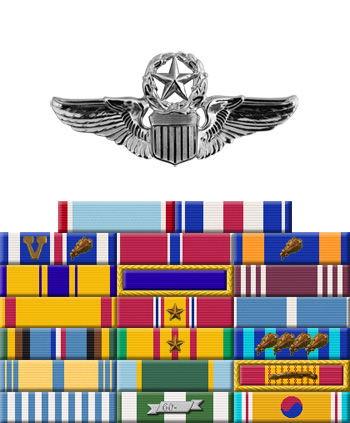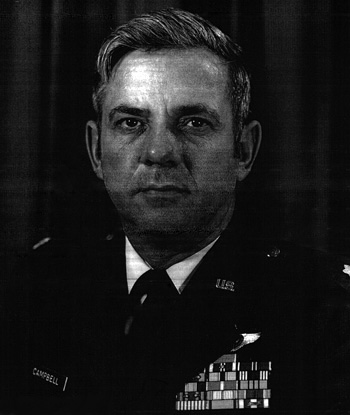
|
Thomas A. Campbell |
 |
|||
| Rank, Service | ||||
Lieutenant Colonel O-5, U.S. Air Force |
||||
| Veteran of: | ||||
|
||||
| Tribute: | ||||
Thomas Campbell was born on July 15, 1931. He enlisted in the U.S. Air Force on January 4, 1951, and was trained in electronics and camera repair. After serving a short tour in Korea, Campbell was accepted into the Aviation Cadet Program on April 17, 1952, receiving a commission as a 2d Lt and his pilot wings at Williams AFB, Arizona, on May 1, 1953. He served as a fighter pilot from May 1953 to January 1956, and then served in the Air Force Reserve from January 8, 1956, to June 2, 1957. Campbell then served as an instructor pilot with the 3641st Pilot Training Squadron and the 3640th Pilot Training Group at Laredo AFB, Texas, from June 1957 to January 1961. After completing Aircraft Maintenance Officer training, Capt Campbell served with the 1625th Support Squadron at RAF Mildenhall, England, from September 1961 to October 1964. He then served with the 3617th Pilot Training Squadron and the 3615th Pilot Training Wing at Craig AFB, Alabama, from October 1964 to January 1968. After completing A-1 Skyraider Combat Crew Training, Maj Campbell served with the 602nd Special Operations Squadron at Udorn Royal Thai AFB, and then at Nakhon Phanom Royal Thai AFB, Thailand, from February 1968 to January 1969. He then completed KC-135 Strototanker Combat Crew Training and served with the 46th Air Refueling Squadron at K.I. Sawyer AFB, Michigan, from June 1969 to January 1971. Col Campbell's final assignment was with the 410th Bomb Wing, also at K.I. Sawyer, where he served from January 1971 until his retirement from the Air Force on July 31, 1972. |
||||
|
||||

